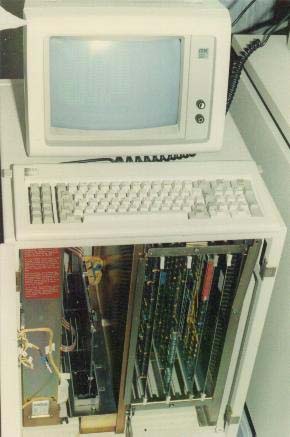
Helsinki University of Technology gets Finland's first
transceiver for connecting an IBM mainframe to an Ethernet
network using the WISCNET software, which supports the Internet
Protocol. |
-
Diginet, a 64 Kbit/s voice-and-data network is launched as
a predecessor to ISDN
-
Local area networks at Helsinki and Tampere Universities of
Technology are linked together with a fixed 64 kbit/s connection
that uses bridges to transmit data.
-
Active members of the Finnish Unix User Group (FUUG) in Tampere
apply for registration of
the .FI domain name, which is approved.
-
Eric Thomas in Paris develops the LISTSERV mailing list
distribution system, originally for the EARN network. This later
also became popular on the Internet, as it is able to handle
very large mailing lists.
-
NNTP (News to News Transfer Protocol), which is more interactive
than UUCP (Unix to Unix CoPy), is developed for distributing
news to Internet newsgroups, allowing news to be transmitted any
number of times.
-
The Internet Engineering Task Force (IETF) and Internet Research
Task Force (IRTF) are set up as collaborative forums for
standardising Internet protocols and for research.
-
The National Science Foundation in the USA funds the setting up
of the 56 Kbit/s NSFNET network, which links US supercomputer
centres together to become the Internet using Fuzzball
computers. This makes possible Internet links to the scientific
community outside the Department-of-Defense-funded ARPANET
project, who had had to put up with other alternatives, such as
the BITNET and UUCP networks.
-
Cisco Systems, a small company with four workers in Silicon
Valley, California, delivers its first Internet routers.
|

